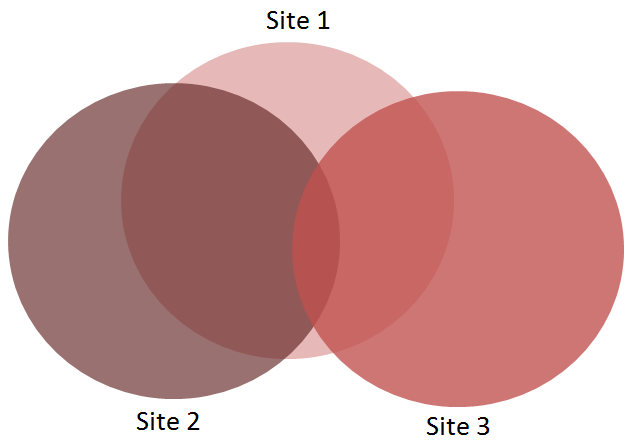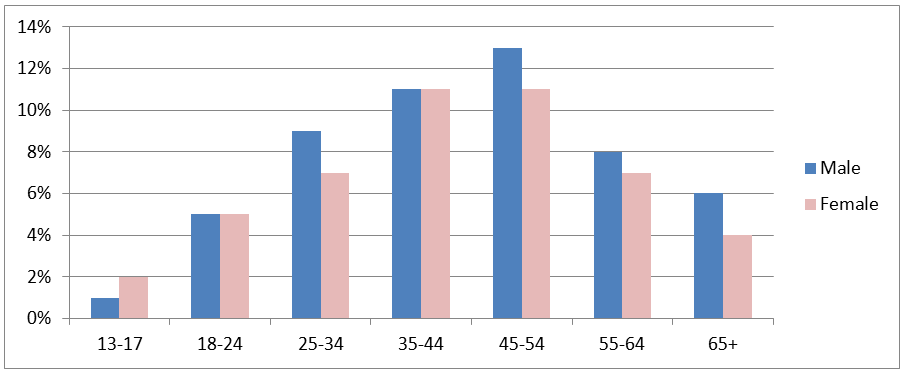When Facebook acquired adserver Atlas from Microsoft in 2013, I was a bit surprised. Now I see it was a brilliant move. By connecting to Facebook’s userbase, Atlas gives a lot of interesting insights in display campaigns. Although Facebook had to change quite a lot to accomplish this result. Here are the most interesting insights from Facebook Atlas:
1. Unique reach and frequency
Of course: unique reach is not a new metric but until now, this metric was based on cookies. The downside of this approach is that you do not know the number of people you reach, but only the amount of unique devices or browsers. As we see the amount of devices per person grow, this metric is getting less and less reliable.
I measured campaigns where the unique reach was higher than the entire Dutch population. Of course, you can correct these results by using a benchmark of the average device per person, but your report will still be based on an assumption.
Thanks to Atlas, we can now really measure the frequency and reach. Atlas offers ‘people based marketing’, as they call it. Contrary to the more conventional systems, Atlas doesn’t use a Cookie ID for identification, but it connects the same Facebook profile (across multiple cookies).
Think about yourself for a moment. It’s likely that you use a laptop, tablet and a phone. All three for different tasks during different parts of the day. Chances are that you are logged into Facebook on all three of these devices. Atlas can tell that the interactions on these devices stem from one person.
This approach isn’t 100% accurate either. Multiple people per household can use the same PC or tablet. That’s something even Atlas can’t see, but their approach gets a lot closer to reality than measuring with cookies.
While it’s pretty cool to see the unique reach in Atlas, the interesting part is acting on it. Using Atlas, you can decide on what level you’d like to measure. When an overview of the total reach of your campaign is sufficient, you can use a single tag for your entire campaign.
However, when you’d like more detailed insights, you can add a tag for every website or creative in your media plan. This takes some more time to set up, but the insights are worth the extra effort. By tagging your campaign on a detailed level like this, you get insights in the total reach, but also in the reach per website and the overlap between websites.
Especially the last insight is really interesting for optimisation of your future media efforts. When running an awareness campaign, you can use this insight to eliminate overlap as much as possible, and pick sites that actually add reach. In the figure below, you can see the overlap of three similar sites. It’s obvious that the combination of Site 2 and 3 is optimal for a unique reach. Site 1 has a bigger overlap with both other sites, and therefore adds less reach.

Reach overlap
Unique reach is closely related to frequency, the average number of interactions a user had with your campaign. Frequency capping is mostly cookie-based within most ad servers. When you look at real people with Atlas, you might notice that one user sees your ad more often then you’ve intended. When you take this into account, you can prevent annoyance by overexposure, or even reduce waste of campaign budgets.
2. Demographics
Not only does Atlas provide insights into how many people you reach and how often you reach them, it also gives you more detailed information on your audience. For instance, you can sort their data on sex and age category. Of course, there are other tools that can provide you with these insights. But the difference is that Atlas is based on real-time Facebook profiles, instead of panel data.
In a way, Atlas turned Facebook into the world’s largest panel. In the Netherlands, there are 9.4 million people with a Facebook profile. This covers a large segment of the internet population, so Atlas can extrapolate this data.
You can get these demographic insights on a campaign level, but also on a website level. This is particularly interesting for brands that focus on a very specific audience. If you want to target young males in the ages between 18 and 35, Atlas will tell you where to find them. This means you no longer have to take your publisher’s word for it: you can measure it yourself!
In the image below, you can see the reach and frequency we measured in Atlas after a placement on a large Dutch news platform, sorted by sex and age. As you can see, we reach more women than men (53 versus 47 percent), and 46 percent of the audience is between 35 and 54 years old.

3. Demographics & conversion
Enough about reach. In the end, all that matters to many e-commerce businesses is money. It’s great to see who you’re reaching, but who is actually buying your products? Is the target audience really the most interesting group for your product? Atlas gives you insight into the relative performance of a campaign, sorted by age and sex.
This leads to interesting insights. For instance, if the young males you were targeting aren’t buying your product, but their older counterparts are, you can adapt your campaign accordingly. You might want to change your targeting, or even your tone of voice and campaign material.
4. The value of mobile in a path
The past few years, mobile grew from second screen to primary device. This gave mobile an important position in the media mix. While the percentage of mobile purchases continues to grow, marketeers continue to struggle to acknowledge the value of mobile media.
More often than not, there will be a mobile touch point in the customer journey. But if conversion happens on a different device, marketeers don’t value the mobile touch point enough. The danger here is that mobile doesn’t get the media budgets it deserves, based on its actual contribution.
Luckily, Atlas can help. Atlas looks at people instead of cookies. So you can see who checked your ad on a mobile device before converting on a desktop or laptop. By measuring like this, you’ll see a rise in the value of your mobile campaign.
5. The connection with offline sales
The most interesting insight Atlas can give you, is the connection between online media efforts and offline sales. Unfortunately, this also leads to the biggest hurdles.
Online, Atlas uses Facebook profiles as a unique identifier. Those profile are not available offline, obviously. Though, a match can be made using a workaround, where every offline customer is asked for their email address (or one of the other available variables). This email address will eventually be used to match a offline visitor to a Facebook profile.
Of course, not every customer will leave their email address at a store, and not every email is matched to a Facebook profile. But some of them are. And for this segment, Atlas can show which customer got in contact with your online campaign before coming to the store.

Schematic representation of the connection between Atlas and offline sales
From insights to targeting
For now, Atlas is mainly interesting because of its insights but Facebook promised that in the future, Atlas will be able to help with specific targeting, based on Facebook profiles. Imagine what this could do to your display campaigns! Waste will be greatly reduced if you’re able to spend your budget on relevant impressions.
To target women, you don’t have stick to websites that are mainly for women. Instead, you can buy ‘female impressions’ on large news websites or other generic domains. This will easily lead to a 50% waste reduction. A giant leap in efficiency, that’ll greatly improve your campaigns. The only downside is that we’ll have to wait for it.







Leave a Reply
You must be logged in to post a comment.